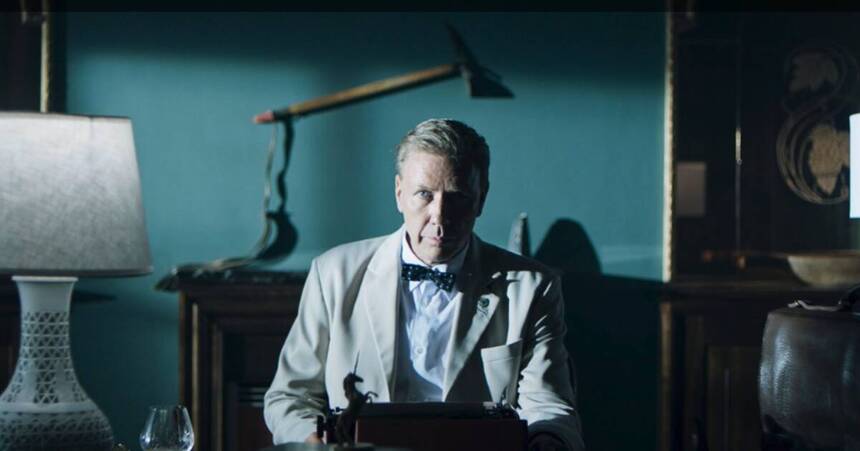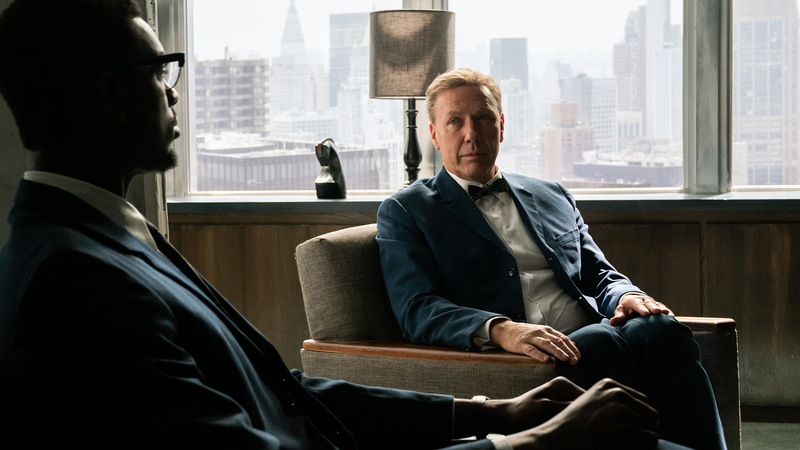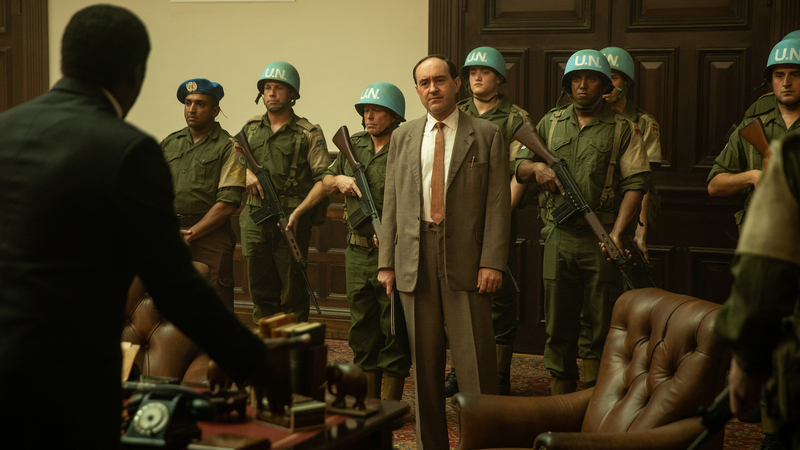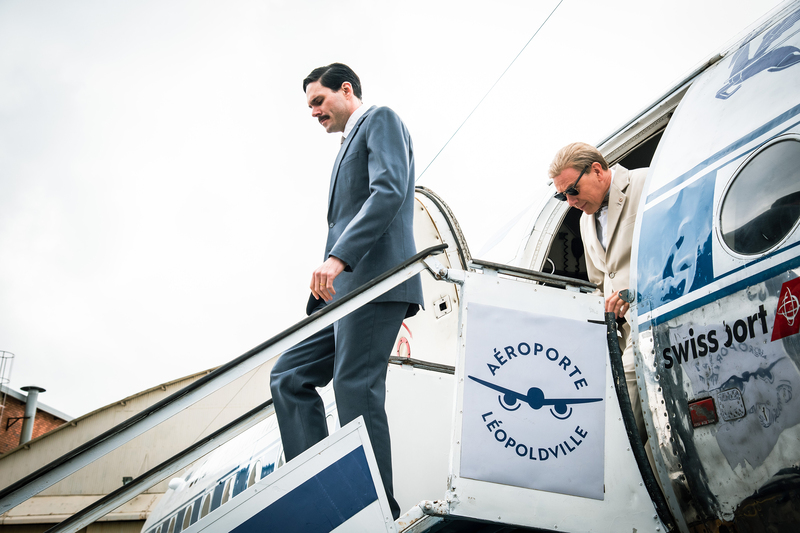Rotterdam 2024 Review: HAMMARSKJÖLD - FIGHT FOR PEACE, A High-Octane Portrait Of The Diplomat´s Final Crusade
Per Fly's biopic is spectacular, terrifically acted and treats its subject with dignity.

In the context of the ongoing complex geopolitical landscape, biopics about political leaders are gaining prominence. These films eschew broad narratives in favor of concentrating on a pivotal period that reassesses the individual's impact. Recent examples include a focused narrative on Golda Meier portrayed by Meryl Streep in Golda. The latest addition to this genre is Per Fly's exploration of the final days of Dag Hammarskjöld, the second Secretary-General of the United Nations in Hammarskjöld – Fight for Peace. Hammarskjöld's mysterious demise, previously the focus of Mads Brügger's documentary Cold Case Hammarskjöld, continues to intrigue and serves as the central theme of Fly's film.
Per Fly, who co-penned the script with Ulf Ryberg (The Girl Who Kicked the Hornets’ Nest), delves into the 1961 Ndola United Nations DC-6 crash in Hammarskjöld – Fight for Peace. The film is set against the backdrop of the Cold War in 1961, a period marked by intense geopolitical strife. It portrays the second Secretary-General of the United Nations amidst his efforts to facilitate the decolonization of Africa. As Hammarskjöld endeavours to promote peace in the Congo, his efforts are undermined by escalating national interests, tensions, and the ruthless dynamics of international politics. The narrative brings to the forefront the significant challenges Hammarskjöld faced, particularly as the conflict in the Congo verged on genocide, highlighting a critical moment in his peacekeeping mission.
Fly interweaves the political and personal aspects of the story, combining elements of a character study, historical drama, and political thriller. The protagonist, always impeccable dapper, shares his solitude with a pet monkey named Greenback, symbolizing his isolated existence amidst global crises. Unlike Golda, Hammarskjöld – Fight for Peace delivers a nuanced equilibrium between the protagonist's professional responsibilities and private life, illustrating the complexities and dilemmas encountered in both spheres.
The majority of the film takes place within the confines of interior office settings, primarily within the United Nations building as Fly maintains a dynamic pace throughout. The protagonist adeptly navigates through numerous challenges, countering successive obstacles while managing the escalating crisis in the Congo. This tense atmosphere is managed through the protagonist's diplomatic demeanor.
Within the confines of the United Nations building and other interior offices, the film maintains a brisk pace through its first three-quarters. Fly depicts the protagonist navigating a series of challenges, adeptly managing the mounting crisis in the Congo. This high-stakes environment is navigated with a measured diplomatic approach, complemented by the occasional use of a resonant voice for emphasis and persuasion.
Actor Mikael Persbrandt (Sex Education) delivers a portrayal of the Secretary-General as deeply committed to his mission, driven by a profound sense of idealism. This dedication renders him a highly empathetic leader, one whose personal sacrifices in the pursuit of global peace are central to his character. Persbrandt's depiction balances authority within the strategic confines of a meeting room, especially when orchestrating responses to crises, with a sensitivity to the human cost, notably in his reaction to reports of civilian casualties.
Fly, Ryberg, and Persbrandt extend the portrayal of the protagonist beyond the professional duties of the ever stoic diplomat to offer insights into his private life. The film ventures behind the closed doors of Hammarskjöld's personal realm, showcasing his engagement with world peace not only through his diplomatic efforts but also through his spiritual pursuits. Furthermore, the film does not shy away from addressing Hammarskjöld's widely discussed asexuality, treating it as a significant element of his personal identity.
In the midst of challenges, including accusations against his integrity by representatives from the Soviet Union and Belgium within the United Nations, a scene unfolds in a moment of solitude within the confines of a restroom, where Hammarskjöld finds a brief break. It is here that he encounters an alleged Soviet honey trap. Through a modest flashback, Fly and Ryberg offer a glimpse into the protagonist's repressed youth, subtly alluding to his lifelong celibacy. The sudden emergence of a friend from the past leads to a reconciliation and the re-surfacing of buried dilemmas.
The portrayal of private life eschews sensationalism, offering a nuanced view of a man who has become a living icon shouldering the burden of immense expectations and ambitions stemming from his deeply-rooted idealism. This exploration of personal life provides a counterpoint to the relentless pace of ongoing crises and emergencies, offering moments of respite and a touch of nostalgia. Despite adapting to a life in New York City, complete with a private driver/bodyguard and a butler, Hammarskjöld is shown as someone who maintains a strong connection to his homeland, adding depth to his character beyond his public persona.
The realm of geopolitics is depicted as unforgiving, placing Hammarskjöld on a perilous journey to the Congo, where he seeks to mediate and resolve the crisis firsthand. The final third of the film explodes into a full-bloodied political thriller seeing the protagonist in a position that takes on almost messianic dimensions.
The film benefits from the precise cinematography of John Christian Rosenlund (The Emigrants) and the authentic period recreation by production designer Niels Sejer (A Royal Affair) and art director Thomas Gubb (Momentum), turn Hammarskjöld – Fight for Peace into a compelling peek at geopolitical affairs during the Cold War. It unfolds as a meticulously crafted thriller, featuring a protagonist whose almost utopian ideals are tested in the arena of international politics and personal sacrifices, yet who remains steadfast in his commitment to his mission.
Persbrandt's magnetic performance anchors the film which serves both as a stylish historical lesson and a homage to the enigmatic diplomat John F. Kennedy called “the greatest statesman of our century.” By framing the biopic within the conventions of a political thriller, the film transforms Hammarskjöld’s final days into audience-driven spectacle with a sobering insight into the fragile world of international politics and geopolitical agenda during the Cold War era with ongoing parallels to the current powder-keg situation on the brink of catastrophe. The film underscores the motivational moral of the power of individual conviction in the face of overwhelming odds and its enduring impact.
Hammarskj�ld
Director(s)
- Per Fly
Writer(s)
- Per Fly
- Ulf Ryberg
Cast
- Mikael Persbrandt
- Francis Chouler
- Cian Barry










